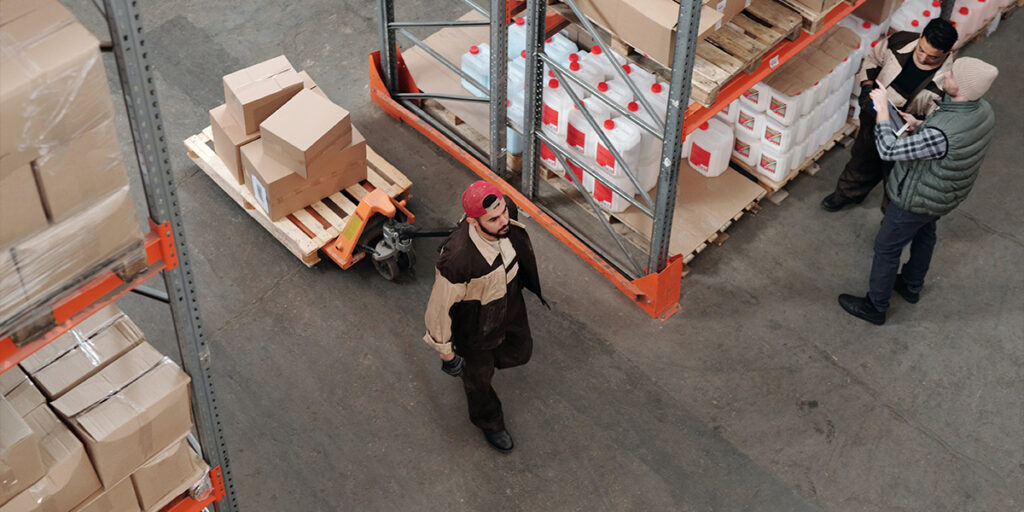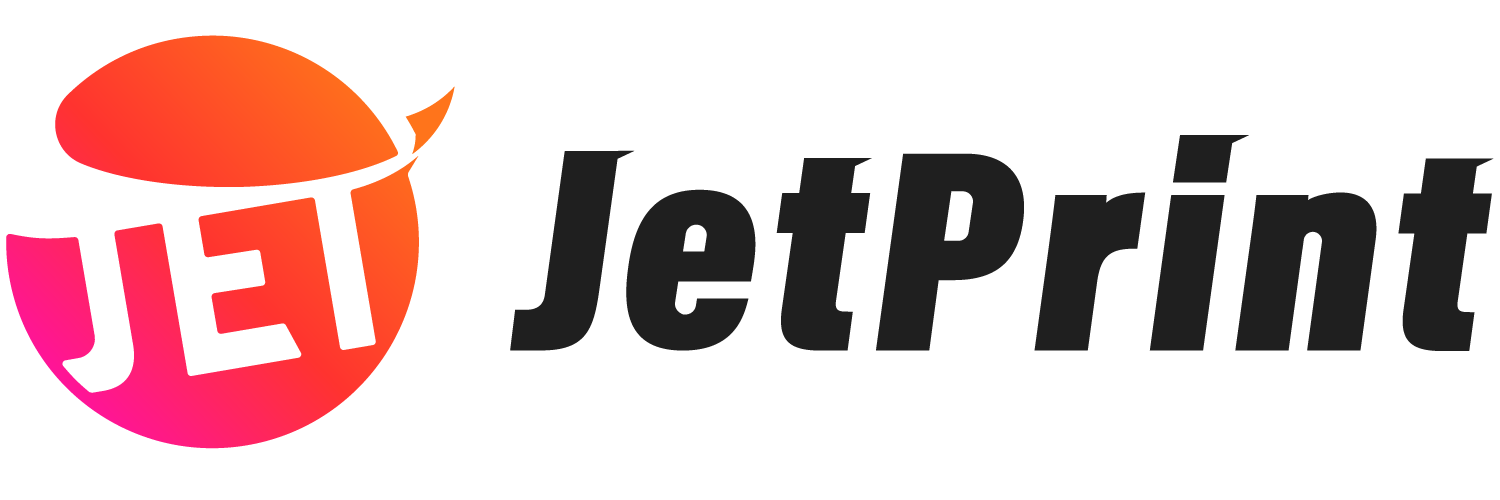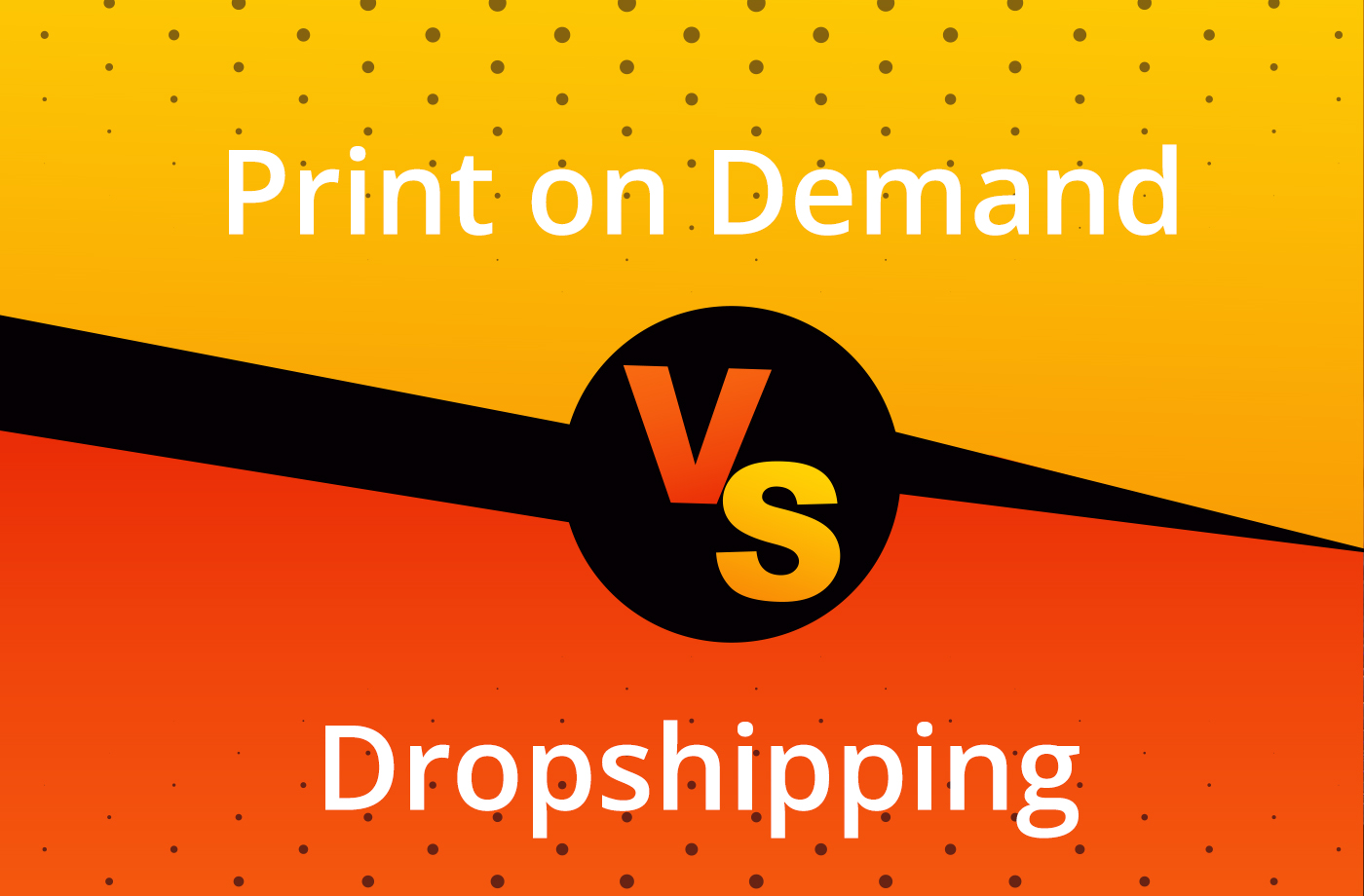If you’re considering opening an online store or expanding your product offerings, it’s crucial to understand the key differences between these two methods. In this article, we’ll break down print-on-demand and dropshipping to help you decide which model best aligns with your business goals and creative vision.
What is dropshipping?
Dropshipping is a fulfillment method and business model in which a store doesn’t keep the products it sells in stock. Instead, when a store sells a product, it purchases the item from a third-party supplier who ships it directly to the customer. This means the retailer never directly handles the product.
The products you offer are those that the third-party supplier has in inventory, and those products are delivered to your customers unchanged.
What is Print on demand?
Print on Demand (POD) is a fulfillment method and business model that allows you to print your designs on white-label products from third-party vendors. When your store receives an order, you pay the vendor, who then ships the product directly to the customer. This means you never handle the product yourself.
The products you purchase feature your designs, and they will be printed and delivered to your customers.
Print on demand vs. dropshipping: similarities

1. Order fulfillment
In both POD and dropshipping, a third-party provider handles the fulfillment process. Once a customer places an order, the supplier manages production and shipping.
2. Low risk
Both models don’t require any upfront fees, and you won’t have to worry about inventory backlogs that could lead to losses. You only pay for products when customers place orders, so there’s no need to store or manage inventory. You also won’t risk paying fees in advance.
3. Online-focused
Both business models can be easily integrated with popular e-commerce platforms like Shopify, WooCommerce, or Etsy, making it simple to set up an online store for quick sales.
4. Rich product variety
Both print-on-demand and dropshipping models allow you to add products freely, providing flexibility across various product types, not just clothing or accessories. You can also choose services from multiple providers without confusion. Additionally, you can easily test new designs or products without committing to large orders.
5. Low barriers to entry
Both business models don’t require you to manage inventory and orders. You only need to sync products to your store. Your main focus should be on marketing, and you can manage products and orders from anywhere at any time.
6. Need to rely on suppliers
Since you can’t participate in the production and transportation processes, product quality and shipping rely entirely on your suppliers.
Therefore, it’s crucial to choose a trustworthy supplier and test the related products.
Print on demand vs. dropshipping: the differences
1. Product customization
Print-on-demand allows sellers to customize white-label products with designs or logos before shipping. In the POD business, the key factor people look for is design, but not everyone has strong design skills.
Dropshipping eliminates the need for design expertise or hiring designers because the supplier’s products are already prepared. No additional requirements are necessary. All products are sold as-is, and sellers are not allowed to make any customizations.

2. Production process
Print on demand products involve printing designs on various items (such as shirts, mugs, etc.) after customers place orders, so the products you see on the websites of each print on demand company are not the final products. Additionally, once a refund occurs, POD products cannot be reused.
Dropshipping products come from suppliers responsible for high-volume manufacturing and fulfillment. These products are final products that have already been produced. After these products are returned, they can be reused as long as they are not damaged.
3. Delivery time
Print on demand typically takes longer to ship than dropshipping because it requires printing designs on products.
However, the shipping times for on-demand printing and dropshipping may vary depending on the shipping method and location.
4. Profit margin
Because POD products are custom-designed by you, they are unique in the market. With unique products you have pricing power and can usually achieve higher profit margins.
In dropshipping, products are typically sold at competitive prices, with the supplier setting the pricing structure. Additionally, you may not know if the supplier you choose is a middleman. You will often find someone offering a lower price, leading to a price war where you and your competitors continuously erode profits.
5. Niche market focus
Print on demand is particularly suitable for niche markets. You can use unique designs or customized products to attract specific audiences.
Dropshipping is appropriate for a broader market because it does not require customization, and you can find many similar products available. Even if your potential audience discovers your product, they may be drawn to competitors.
6. Branding opportunities
Since print on demand allows sellers to design, displaying a strong brand logo or color scheme on the product is an option for some sellers. Additionally, some POD companies, like JetPrint, provide branded customization services, enabling sellers to further design products that showcase a strong brand identity.Branding opportunities are limited with dropshipping because sellers cannot participate in the product design process. As a result, sellers often compete with other retailers selling the same generic products.
How to choose between dropshipping and print on demand?

Whether you use dropshipping or print on demand, you can make money; neither is definitively more profitable.
People who meet the following characteristics may choose dropshipping:
- Selling a variety of products
- Little e-commerce experience
- Limited free time
People who meet the following characteristics may choose print on demand:
- Strong design skills
- Desire to develop their own brand
- Willingness to spend time designing products
- A clear understanding of their audience
In summary, both print on demand and direct sales offer unique advantages for different business models. Both models allow you to sell products with minimal upfront costs, and you don’t have to manage inventory.
Ultimately, the choice between these two business models depends on your business goals, target market, and the level of customization you want to provide. By understanding these differences, you can make an informed decision that aligns with your entrepreneurial vision.
Related article: How to Brand Dropshipping
Where to get reliable print on demand dropshipping services
If you are designing and selling print-on-demand products through Shopify, WooCommerce, or other platform websites and are constantly looking for more dependable factories, supply chains, and service providers, we recommend that you use the best print on demand companies on the market, as their customized products are available with high-quality and high-resolution printing.
JetPrint currently supplies over 450 different types of print on demand products while providing low cost, advanced processes (sublimation, embroidery, screen printing, and dtg printing) in the market. JetPrint also offers some custom printing and AOP clothing, bags, and home decoration series.Dropshipping and Print on Demand are both profitable business models.
FAQ
What are the main differences between print on demand and dropshipping?
The main difference is product customization; print on demand focuses on unique, customizable items, while dropshipping typically involves selling existing products from suppliers.
Which model is more cost-effective?
It depends on your business goals. Because of customization, the cost per item for print on demand may be higher, and it will test your design skills more. Dropshipping usually has lower upfront costs and faster shipping, but it may involve more competition.
Can I use both models together?
Yes, the two models are not conflicting, and many sellers use both print on demand and dropshipping to offer a wider variety of products.


0 Comments